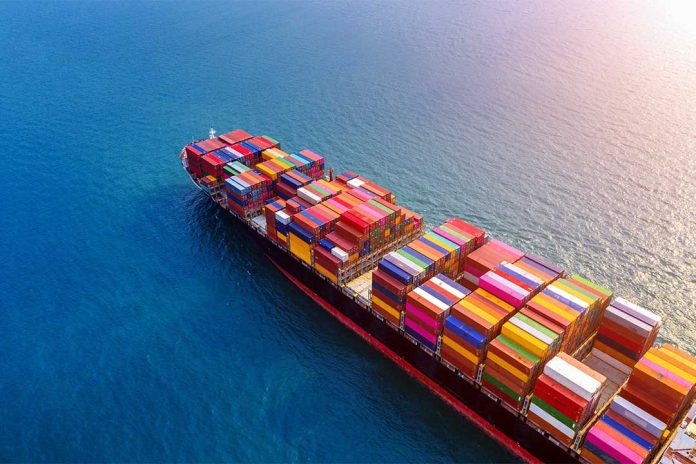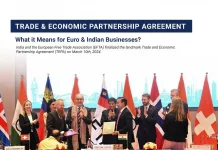India has been gaining rapid ground with respect to entering Free Trade Agreements with diverse nations across continents. This has proven to be a boon not only for the country’s exporters but also for the overall IMPEX numbers. A majority of the FTAs signed by India provide tariff concessions & other key benefits which afford new opportunities to the country’s product exporters especially SMEs.
A Unique Indian Scenario & the Benefits Bouquet
Some of India’s trading partners including Japan, South Korea and some ASEAN countries have offered tariff concessions to a host of SME products. This extends to readymade garments, leather goods, processed foods and engineering products like auto components. There are also specific export promotion schemes for MSMEs facilitating the firms to participate in international exhibitions and fairs, training programme on packaging for exports etc. The specially formulated Market Development Assistance (MDA) Scheme for MSME exporters and National Award for quality products are definitive game changers.
Futuristic Schemes to Benefit SMEs
India’s proactive measures to promote trade and benefit exports from SMEs include innovative schemes under the new Foreign Trade Policy 2015-20. The array of impressive initiatives spans Interest Equalization Scheme on pre and post shipment rupee export credit, Merchandise Exports from India Scheme (MEIS), Services Exports from India Scheme (SEIS), double weightage for export entitlement to SMEs (for grant of one star export house), electronic filing and issuance for specified FTP Schemes, online platform for preferential certificates of origin and more.
An exclusive logistics division has been commissioned by the Department of Commerce to coordinate integrated development of the logistics sector with trade promotion as the mandate. The country has devised some game changing innovations in the form of
- Agriculture Export Policy,
- Trade Infrastructure for Export Scheme (TIES), and
- Transport and Marketing Assistance (TMA).
Benefits Experienced by the Indian Trade Sector:
- Elimination of trade barriers with easier market access to FTA partner nations
- Non-tariff barriers removal for facilitation of cross-border movement of goods
- Preferential treatment for exporters of FTA agreements over non-FTA members
- Competitive pricing by FTA exporters compared to a non-FTA export via duty preference
- Promotion of conditions of fair-trade competition giving equitable benefit for trade development
- Spike in foreign investment outside the FTA by deploying a conducive trading environment and facilitating demand for exports
- Innovations like Mutual Recognition Agreement (MRA) to improve multilateral negotiations and decrease complexities
- Helping domestic industries become more competitive via FTA to decrease the dependence on government support & subsidies
Some of India’s Free Trade Agreements:
Country wise
- India – Sri Lanka Free Trade Agreement 2000
- India – Afghanistan PTA 2003
- India – Singapore CECA 2005
- India – Bhutan Trade Agreement 2006
- India – Chile PTA 2007
- Treaty of trade between India and Nepal 2009
- India – South Korea CEPA 2010
- India – Malaysia CECA 2011
- India – Japan CEPA 2011
- India-Mauritius CECPA 2021
Bloc wise
- India-Asia Pacific Trade Area (APTA) – Bangladesh, China, India, South Korea and Sri Lanka 2005
- India-South Asia Free Trade Area (SAFTA) – Bangladesh, Bhutan, India, Maldives, Nepal, Pakistan, Sri Lanka, Afghanistan 2006
- India-MERCOSUR PTA – Brazil, Argentina, Uruguay and Paraguay, India 2009
- India-ASEAN FTA – Brunei, Cambodia, Indonesia, Laos, Malaysia, Myanmar, Philippines, India, Singapore, Thailand, Vietnam 2010
The future looks bright
Many nations like Australia have evinced keen interest in collaborating with India for furthering mutual trade interests. Australia has committed to make India its third-largest export market by 2035. The huge trade deficit of India’s export (USD 4.2 billion) to Australia vs import (USD 14.1 billion) from Australia is aimed to be reduced via the FTA.
In addition, an ETP between India and the UK is under negotiation since 2017. Both nations have already signed a Migration and Mobility MOU to implement the India–UK comprehensive Migration and Mobility Partnership (MMP) and MoU for cooperation in the field of telecommunications/ICT. It enhances cooperation in telecoms infrastructure, including telecoms diversification and disaster resilience between both nations.
An India – EU FTA (Europe Free Trade Agreement) has been under negotiation since 2021 and is soon likely to fructify. All these developments are aimed at giving the Indian entrepreneurial sector especially the SMEs a huge fillip.
Also Read:
- The Critical Role of FTA (Free Trade Agreements) in Global Economy
- Indian plastic companies have a wide-open ground to grow: Here’s how
- NAFTA: North America Free Trade Agreements And Its Benefits in Global Market
- UAE & Israel Signed a New FTA: An Overview
- Fastest Growing Industries (Sunrise Sectors) in India





